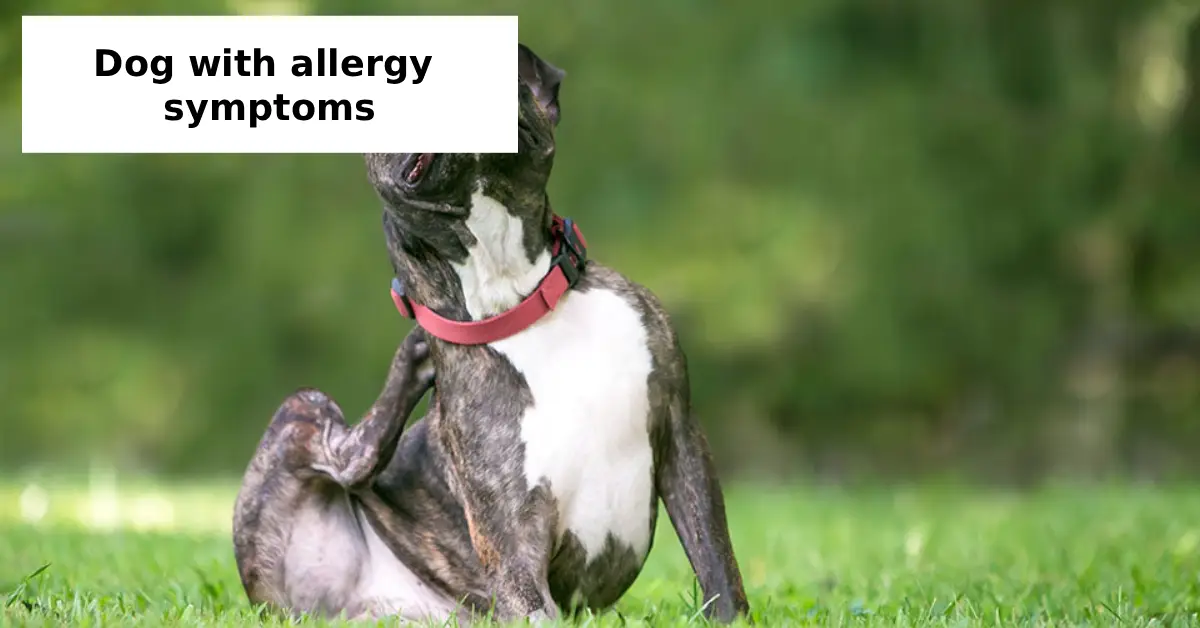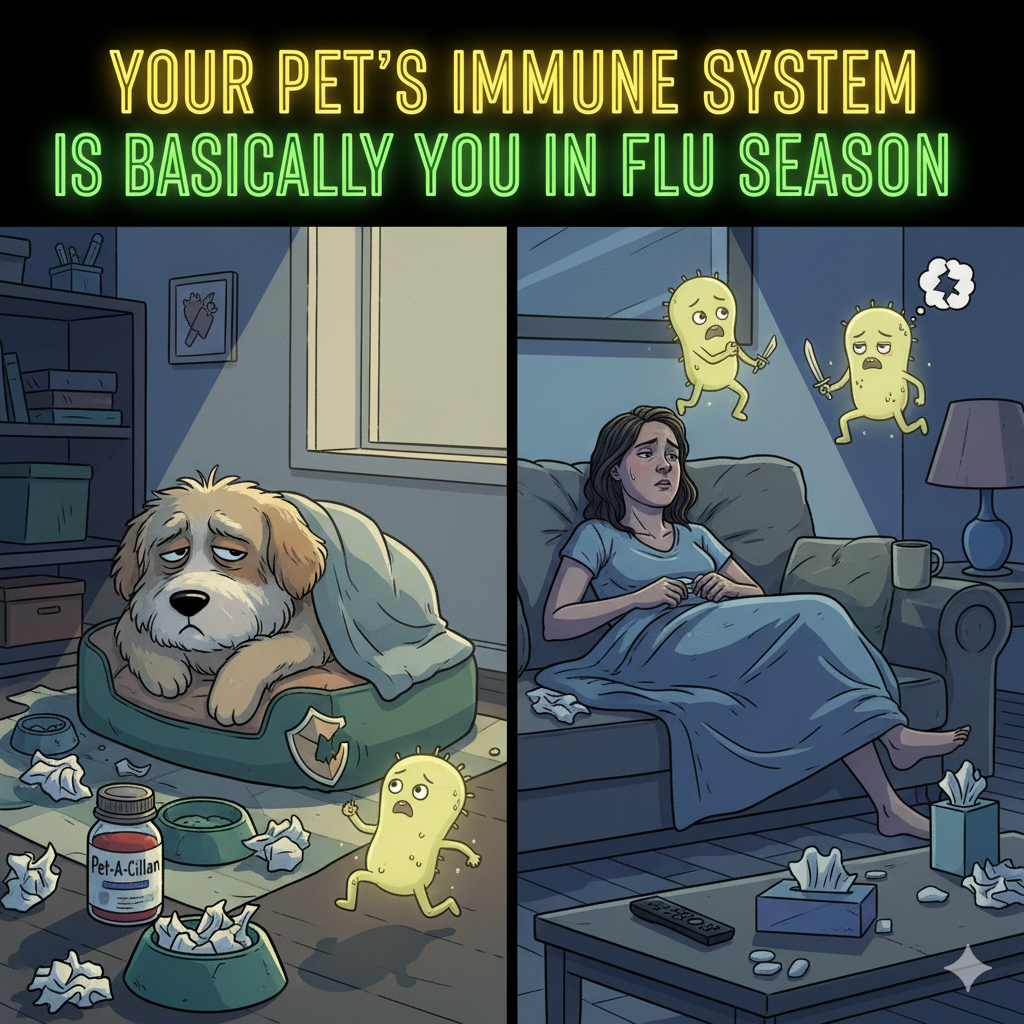If you’re a U.S. dog owner noticing allergy symptoms in their pets, you know how heartbreaking it can be to watch your furry friend scratch, lick, or feel uncomfortable. Allergies in dogs are more common than many pet parents realize, and without proper dog allergy symptom care, your pet’s condition can worsen over time.
In this comprehensive guide, we’ll cover how to identify allergy symptoms, the best ways to manage them, and how to create a healthy environment for your dog. We’ll also share vet-approved allergy solutions, natural remedies, and prevention tips tailored for owners of allergy-prone breeds like Bulldogs, Retrievers, and Pugs.
Understanding Dog Allergy Symptoms
Before we talk about dog allergy symptom care, it’s important to recognize the signs. Common symptoms include:
- Persistent scratching or chewing
- Red, inflamed skin
- Ear infections
- Licking or chewing paws
- Watery eyes or nasal discharge
- Hair loss in certain areas
These symptoms could be triggered by food allergies, flea bites, or environmental factors like pollen and dust.
1. Bathing – The First Step in Dog Allergy Symptom Care
One of the easiest and most effective ways to provide relief is through proper bathing. Knowing how to bathe a dog with allergies at home can significantly reduce itchiness and remove allergens from your dog’s skin and coat.
- Use hypoallergenic shampoos designed for sensitive skin.
- Avoid hot water, which can dry the skin.
- Rinse thoroughly to remove all soap residues.
How often should I bathe my allergy prone dog? Most vets recommend bathing every 2–4 weeks, but during peak allergy seasons, weekly baths may help. Always consult your vet before increasing bath frequency to avoid over-drying the skin.
2. Choosing the Right Diet for Dogs with Allergies
Food plays a major role in dog allergy symptom care. Some allergies are caused by proteins like chicken, beef, or dairy. Switching to the best allergy-friendly dog diets in the U.S. can make a big difference.
- Hydrolyzed food options for dog food allergies are often recommended for dogs with severe food sensitivities.
- Grain-free options may help if your dog has grain allergies, but only switch diets under veterinary guidance.
Pet parents seeking vet-approved allergy solutions should remember that diet changes may take 8–12 weeks to show full results.
3. Natural Remedies for Canine Allergies
Many natural and holistic pet care enthusiasts look for non-medicated approaches. Natural remedies for canine allergic dermatitis include:
- Oatmeal baths for soothing itchy skin
- Coconut oil as a topical moisturizer
- Quercetin supplements (with vet approval) for anti-inflammatory benefits
However, while these remedies can help with mild symptoms, always check with your vet before starting any supplement.
4. Managing Environmental Allergies in Dogs (U.S. Specific)
Environmental factors are a common cause of discomfort, especially for U.S. dog owners noticing allergy symptoms in their pets. Managing environmental allergies in dogs (U.S.) includes:
- Wiping paws after walks to remove pollen
- Using air purifiers indoors
- Washing bedding weekly in hot water
This is especially important for dogs who suffer from dog paw licking allergies causes and treatment issues, as pollen and dust can irritate sensitive paws.
5. Flea Allergy Prevention
Even a single flea bite can trigger severe allergic reactions. Vet-recommended flea allergy prevention for dogs should be part of your regular care routine.
Options include:
- Monthly oral flea preventatives
- Topical flea treatments
- Flea collars (for certain breeds and environments)
By preventing flea infestations, you’re tackling one of the most common triggers in dog allergy symptom care.
6. Medical Treatments for Dog Allergies
For moderate to severe cases, medical intervention may be necessary. Two commonly used treatments are Cytopoint and Apoquel, which provide fast relief from itching and inflammation.
Using Cytopoint or Apoquel for dog allergies should always be done under veterinary supervision, as each dog responds differently to medication.
7. Cleaning Your Home to Reduce Dog Allergy Symptoms
An often-overlooked step in dog allergy symptom care is keeping the living environment allergen-free. Cleaning home to reduce dog allergy symptoms involves:
- Vacuuming carpets and rugs at least twice a week
- Washing soft toys regularly
- Using HEPA filter vacuums to trap dander and pollen
The cleaner your dog’s space, the fewer allergens they will be exposed to.
8. Supporting Emotional Well-Being
Allergies don’t just affect physical health—they can also impact your dog’s happiness. Just like emotional support animals help people, your attention and care can be an emotional lifeline for your pet during allergy flare-ups.
Play, gentle grooming, and comfort can make your dog feel secure while you work on their physical recovery.
9. When to See the Vet
You should consult a veterinarian if:
- Symptoms worsen despite home care
- Your dog develops open sores or infections
- Diet changes show no improvement after 12 weeks
Early intervention ensures faster recovery and prevents chronic issues.
10. Preventing Future Allergy Flare-Ups
Once you’ve learned effective dog allergy symptom care, the next step is prevention. Key strategies include:
- Keeping track of seasonal allergy patterns
- Maintaining a consistent flea prevention routine
- Regular grooming and coat inspections
- Feeding a high-quality diet suited to your dog’s needs
For first-time pet owners learning about dog health issues, prevention not only saves money but also ensures a happier, healthier pet.
Final Thoughts on Dog Allergy Symptom Care
Caring for a dog with allergies requires patience, observation, and a combination of lifestyle changes, medical care, and environmental management. Whether it’s bathing your dog at home, trying allergy-friendly diets, or seeking medical treatment, consistency is key.
By understanding triggers, following vet advice, and creating a clean, comfortable environment, you can greatly improve your dog’s quality of life.
For pet parents seeking vet-approved allergy solutions or natural and holistic pet care enthusiasts, remember that every dog is unique—what works for one might not work for another. Stay informed, stay proactive, and your furry friend will thank you.






1 thought on “How to Care for Your Dog with Allergy Symptoms”